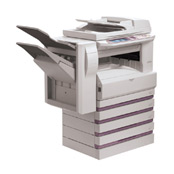



Visiting Benjamin Leroux, who has just left Comte Armand in Pommard to run his own maison in Beaune, I tasted his Les Amoureuses from Chambolle-Musigny. The biggest single factor behind the creation of the micro-négociant breed is the high price of land. Wines from the maison are intended to be easier drinking than those from the domaine. The domaine has firmed up since we became organic.’Īnother producer who sees a difference between domaine and négociant is Nicolas Potel, who created Domaine de Bellene and Maison Roche de Bellene. ‘Our domaine wines used to be more like the négociant wines,’ explains Seysses. The négociant wines come out softer, more fruit-forward and less structured. We compare Morey-St-Denis from the domaine and the négociant, and although Seysses says, ‘I don’t really believe a négociant can be as a good as a domaine, because you can’t control the vineyards,’ I would say the distinction is more a difference in style than quality. ‘Most micro-négociants focus on the high end, but we have the domaine so I focus on village wines,’ he says, as we taste his Chambolle- Musigny, Morey-St-Denis and Gevrey-Chambertin. Dujac Fils et Père is a négociant activity that encompasses Domaine Dujac, which his father created. I have to get it right at the start,’ says Jeremy Seysses, now Dujac’s winemaker. ‘Big négociants blend many lots, but I don’t have that capacity. The focus is on representing individual vineyard sites. It’s not just scale that distinguishes micronégociants: most function like domaines in trying to control production from vineyard to bottling. His wines from the Côte de Nuits show an unusual level of refinement. ‘All the wines I made before, I was farming the vineyards from the beginning.’ Like many micro-négociants, Marchand’s emphasis is on the high end, with half of his production in premiers and grands crus. ‘I’m more of a grower by background,’ he continues. If we were anywhere else it would be a total nonsense, but that’s how it is in Burgundy,’ says Pascal Marchand, who was at Comte Armand in Pommard, and with Domaine de la Vougeraie in Nuits-St-Georges, before striking out on his own in 2006. The micro-négociants are so-called partly because they function on the small scale of the domaine, but also because they often make micro-cuvées. The distinction isn’t always overt, but the word ‘Domaine’ can be used on the label only for production from estate grapes, while ‘Maison’ is often used to describe wines made from grapes which have been purchased. Between négociants and domaines, some of the best-known producers started as négociants, but then bought vineyards, turning into négociantgrowers, and now their production includes wines made from both estate and purchased grapes. By contrast, domaines make wine only from estate vineyards, and usually on a small scale (average less than 8ha).

Owning no vineyards, their expertise tends to be in maturing and blending wine to achieve a certain style. Foxconn is a world-class force.More than half of Burgundy is made by traditional négociants, whose average size is 10 times that of the average domaine. This seems like a big deal, getting a Japanese manufacturer under Taiwanese control setting up production in China, all to supply an American client, at least at first. Foxconn has invested in Innolux, Sakei and Sharp, and now ranks third behind Samsung and LG in total display production, if those companies' output (at least on paper) are combined. It looks like Foxconn and presumably Apple are on an ambitious path to get some control over this situation. The display production threshold is, as you say, an ongoing problem, not only for iPhones, but other Apple products.įor examples: a display bottleneck was a main reason that Apple had to wait an extra year or two to introduce larger iPhone sizes - in that case it was LDPS production the first iPad mini retina was gimped on color gamut because, one has to assume, because of Apple's inability to source more efficient panels to allow for better backlighting or, there still seems to be an industry-wide shortage of IGZO production for larger displays, May explain why Samsung has 2 different launch dates for its flagship handsets, almost 6 months apart. I would estimate if they were to convert their entire line, they would require around 15 million of them at launch.įrom the beleaguered Note 7, we saw that they had to recall around 2 million of them. No manufacturer can produce them in large enough volumes to satisfy iPhone demand. Yeah! That seems to be the problem with OLED.


 0 kommentar(er)
0 kommentar(er)
